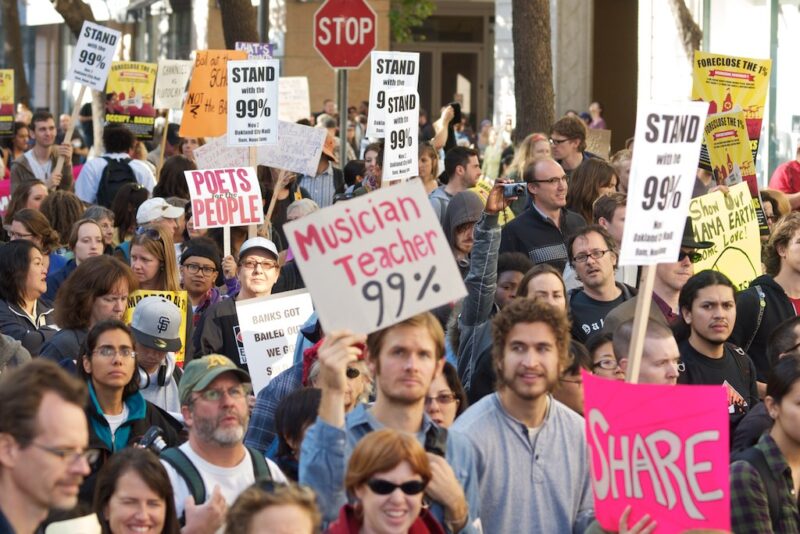Economic inequality is at the forefront of political debates and conversations among ordinary Americans. Thomas Piketty’s tome on the subject has remained in the New York Times bestseller list since the first week of its release. President Obama has deemed income inequality to be “the defining challenge of our time”. About half of Americans agree that inequality is a “very big problem,” according to Pew Research Surveys. On the other hand, columnists for the Wall Street Journal and the The New York Times have joined federal Congressional representatives from both parties to question the extent of the problem. Policy solutions remain largely stalled at the federal level as powerbrokers debate what to do about income inequality—and whether it is a problem at all.
Cities, meanwhile, have begun to wage their own war against local poverty and inequality through a key instrument: the minimum wage. Ten cities and counties have now approved local minimum wage laws. San Francisco initiated the local minimum wage movement over a decade ago, when voters approved a raise to $8.50; since then, the city has augmented compensation and mandated employee healthcare coverage and paid time off. The movement has now moved to the East Bay: Richmond recently passed a measure to raise the local minimum wage to $13, and Oakland passed an initiative in Nov. 2014 to establish a base pay rate of $12.25.
Detractors argue that cities and workers will pay for these seemingly progressive policies, and claim that employment rates will suffer as companies lay off workers to absorb new costs. Some might well reap the rewards of higher wages, they say, but only at the expense of workers struggling with increased unemployment and the broader public that must support them. Could minimum wages in fact hurt the very workers they seek to help?
The answer is no, according to research by economists Michael Reich, Annette Bernhardt, Ken Jacobs, and Ian Perry, from UC Berkeley’s Institute for Research on Labor and Employment. They extensively analyzed the consequences of a minimum wage in Oakland, and of city-specific wage increases in general, and concluded that local minimum wage laws do exactly what they were intended to: raise the incomes of low-income workers.
“In our assessment,” they write, “the weight of the evidence suggests that moderate minimum wage increases have insignificant to non-existent negative effects on employment and hours, reduce worker turnover, and increase worker retention, and result in small, one-time price increases in heavily affected industries, such as restaurants.”
What do the new minimum wage laws portend for the Bay Area economy? Reich, Bernhardt, Jacobs, and Perry examined the projected effects of the Oakland proposal using employment statistics from a recent local census. They modeled the effects of the proposed wage increase on two groups of workers: minimum wage workers and those who cater to them. Their model generated a range of possible salary effects, from which they chose a midpoint to understand the real-life consequences for the city and its workers.
The results: up to 48,000 Oakland employees will earn $2700 more per year on average. On the scale of the city, the wage increase translates into $120 million more dollars in the pockets of local workers. Wage boosts would particularly benefit adult workers of color, who disproportionately constitute workers earning less than the proposed wage.
But must not this wage increase come at a cost? Not really, the researchers say. Salary costs make up only a portion of a business’s operating costs. For this reason, even a significant change in wages (such as the change from Oakland’s $8 minimum to the $12.25) results in a modest increase in operating costs. As a result, businesses suffer little from new minimum wage regimes and have little need to lay off workers. As Reich put it in an editorial for Politico, “No, a Miminum-Wage Boost Won’t Kill Jobs.”
Companies will easily absorb the costs of the wage increases through several means. First, workers’ productivity increases as they pull themselves out of poverty and into more stable financial situations. Morale balloons while absenteeism and truancy plummet. Second, employee turnover decreases once workers earn enough to secure a sustainable lifestyle. Companies thus avoid the costly process of finding, hiring, and training new workers. In short, workers that are more highly valued produce more valuable and consistent work.
The researchers concede that prices would nominally increase to accommodate higher wages, but their calculations yield an estimated price increase of only 0.2% in retail industries and 2-3% in restaurants. A $10 burger would cost $10.25 under the new regime – a minimal change that seems unlikely to hurt consumers.
Resilient businesses, workers, and cities will thus all benefit from higher minimum wages. Tempering inequality and reducing poverty promises to reduce welfare expenditures and raise morale all around. New minimum wage legislation offers much more fundamental rewards: as Reich and Jacobs wrote in the New York Times, such policies “restore, on a very personal level, some of our notion of fairness.”


